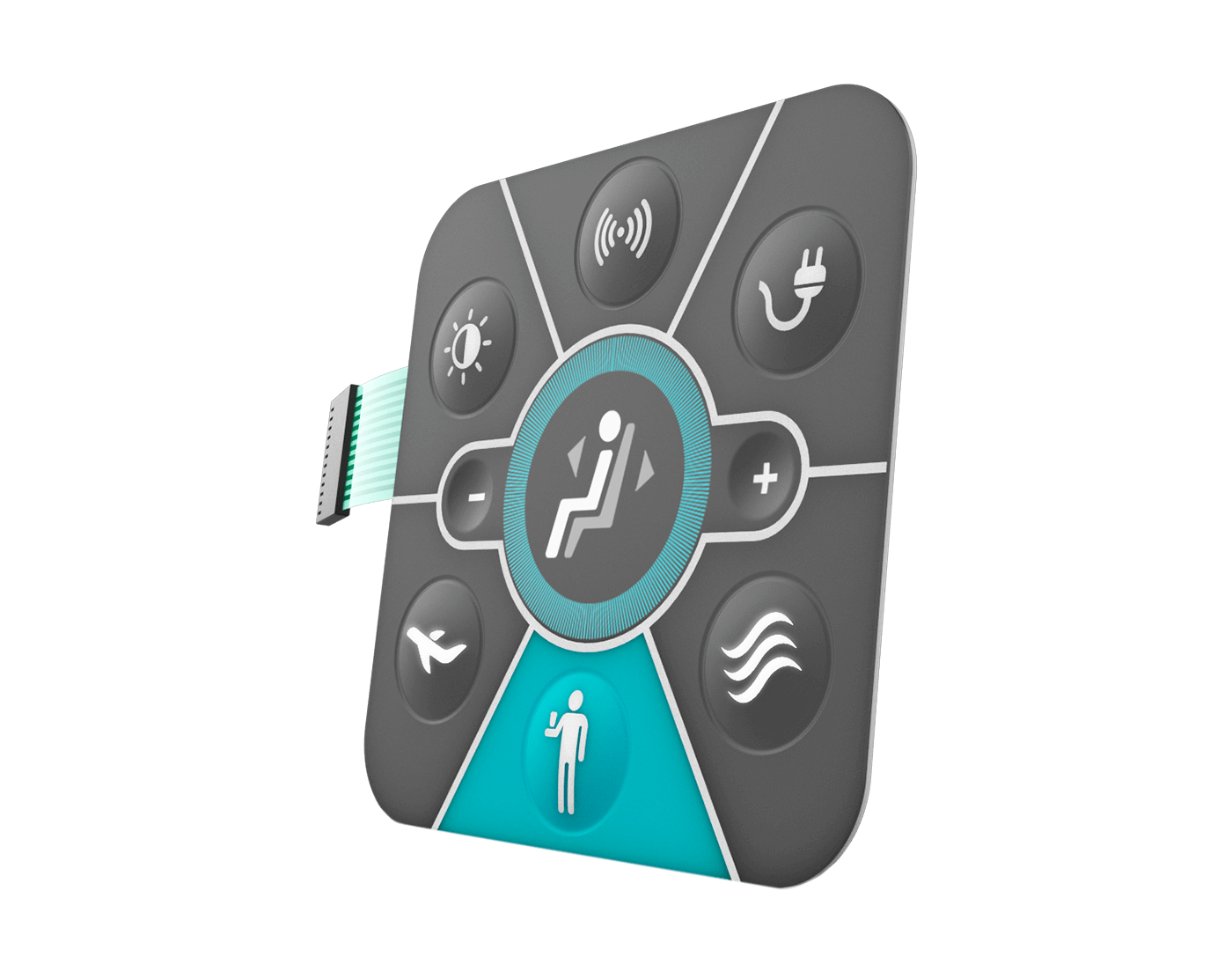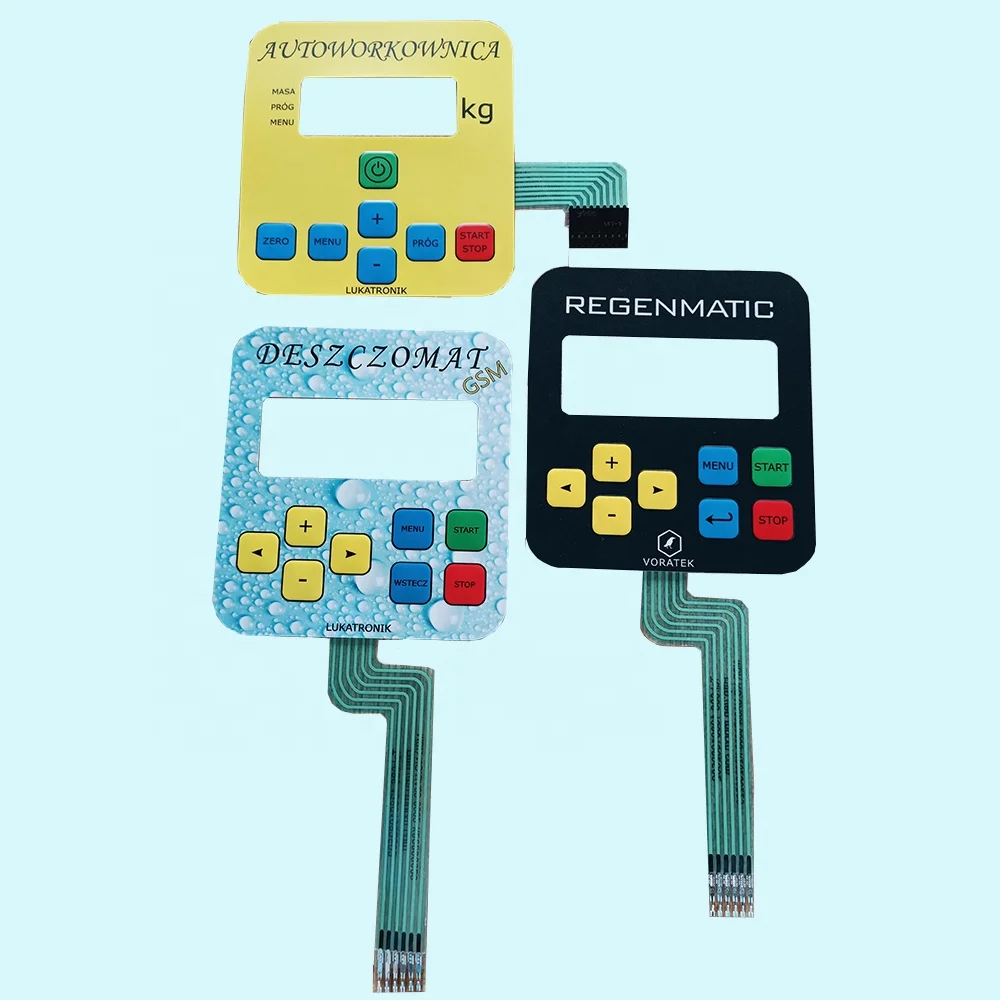Understanding the Significance of Membrane Switch in Modern Electronics and Their Applications
Membrane switches work as a necessary part in modern-day electronic devices, supplying an efficient user interface for customer communication. Their light-weight and personalized nature makes them ideal for a series of applications throughout varied sectors. Recognizing their vital parts and benefits can supply insights into their growing importance. As modern technology remains to development, the development of Membrane switches questions regarding their future applications and design innovations. What exists ahead in this dynamic area?

What Are Membrane Switches?
Membrane buttons are crucial parts in contemporary electronics, working as customer interfaces that promote communication in between gadgets and users. These buttons contain a number of layers, including a visuals overlay, a sticky layer, and a circuit layer, all of which job together to create a functional and sturdy user interface. The design enables for a level, inconspicuous service that can be customized relating to size, shape, and visual look, making them appropriate for different applications, from customer electronics to medical gadgets. The tactile responses offered by Membrane changes boosts individual experience, while their resistance to dirt and wetness makes them optimal for challenging settings. Membrane buttons can include features such as backlighting and published graphics, even more increasing their usability. Their flexibility and robustness make them a recommended selection in sectors where reliability and simplicity of usage are critical, inevitably adding to the seamless procedure of modern digital devices.
Secret Components of Membrane Changes
While different components add to the functionality of a membrane layer switch, three primary layers play considerable functions in its layout and procedure. The top layer, usually made from a resilient polymer, offers as the user interface for user communication, commonly featuring published symbols and graphics. Beneath this is the spacer layer, which preserves the required distance in between the top layer and the circuit layer. This spacer layer warranties that the switch triggers just when pressed, preventing accidental inputs. Ultimately, the circuit layer contains conductive traces that complete the electrical circuit when the leading layer is dispirited. These traces can be made from various materials, consisting of copper or silver. Together, these elements develop a durable and trustworthy gadget that is small and functional, ideal for a variety of electronic applications, from household devices to medical devices. Recognizing these vital components is vital for valuing the total performance of Membrane buttons.
Advantages of Utilizing Membrane Changes

Membrane Switch Production Refine
Recognizing the Membrane button production procedure discloses the complex actions associated with producing these necessary parts. The procedure commonly starts with the style phase, where formats and specs are created utilizing specialized software. Following this, the visuals overlay is printed on a versatile substrate, commonly utilizing high-resolution printing techniques to guarantee quality and precision.Next, the sticky layers are applied, which serve to bond the numerous parts with each other. The circuit layers, made from conductive inks or materials, are after that published onto a different substrate. These layers are very carefully aligned and laminated flooring to produce a practical switch.After setting up, the buttons go through examining to confirm capability and durability. Quality control actions are carried out throughout the process to identify and correct any flaws. Lastly, the finished Membrane buttons are packaged and prepared for circulation, ready to meet the needs of contemporary electronic applications.
Applications of Membrane Switches Over in Different Industries
Membrane buttons are significantly made use of across different markets, especially in medical equipment and consumer electronics. In the medical field, they give reputable control interfaces for tools that need accurate operation. In consumer electronic devices, these buttons enhance user interaction by using receptive and sleek user interfaces.
Medical Tools Control
Numerous modern-day medical tools utilize Membrane buttons for structured operation and enhanced user communication. These switches provide a dependable, resilient interface for a range of applications, including diagnostic tools, person surveillance systems, and medical instruments. Their personalized styles allow for details designs that can fit the distinct demands of healthcare specialists, guaranteeing instinctive navigating and efficient accessibility to crucial functions. Additionally, Membrane switches are resistant to contaminants, making them ideal for sterile atmospheres. The responsive responses they use can enhance customer confidence, lowering the risk of mistakes during vital clinical procedures. Generally, the integration of Membrane buttons in clinical equipment significantly adds to improved operational effectiveness and client safety and security in medical care setups.
Customer Electronics Interfaces
In the domain name of customer electronic devices, Membrane buttons play an essential function in improving interface across a variety of tools. These buttons are essential to products such as remote controls, microwaves, and video gaming consoles, supplying a easy to use and reliable interface. Their design enables a seamless assimilation of graphics and performance, enabling suppliers to develop streamlined, modern visual appeals without compromising usability. Membrane switches are also recognized for their sturdiness, typically enduring considerable use and exposure to different ecological problems. Furthermore, they can incorporate functions like backlighting and responsive comments, additional improving the user experience. As consumer needs for sophisticated yet intuitive interfaces click for info expand, Membrane switches remain to be a vital element beforehand digital tool performance.
Design Factors To Consider for Membrane Changes
Designing efficient Membrane changes needs careful focus to different variables that influence both performance and user experience. One essential factor to consider is the option of materials, as they can influence sturdiness, tactile feedback, and visual charm. Picking an ideal adhesive is essential for ensuring lasting attachment and resistance to ecological factors.In addition, the format and design of the button should fit user communication, with button sizes and spacing enhanced for convenience of usage. The incorporation of graphics and labeling must focus on clearness and exposure under various lights conditions.Consideration of electric qualities, such as actuation pressure and button sensitivity, will certainly boost the responsiveness of the Membrane switch. Moreover, the style ought to fit producing procedures to guarantee cost-effectiveness and prompt production. In general, a well-balanced design improves both the user and the capability experience of Membrane switches in contemporary electronic devices.

Future Patterns in Membrane Switch Modern Technology
As modern technology continues to develop, Membrane switches are poised to integrate new innovations that will enhance their functionality and application in numerous areas. One significant fad is the consolidation of flexible and durable products, which will raise the life-span and integrity of these switches. Enhanced surface appearances and customizable graphics are additionally prepared for, enabling more instinctive individual interfaces.Moreover, the integration of clever technology, such as touch-sensitive surfaces and haptic responses, is anticipated to improve individual interaction, making Membrane switches over extra engaging and receptive. In addition, advancements in printed electronic devices will enable a lot more complex circuitry within thinner accounts, even more increasing design possibilities.Sustainability will certainly likewise play a crucial duty in future advancements, as suppliers check out eco-friendly materials and production procedures. On the whole, these trends will certainly assure that Membrane switches over continue to be vital and appropriate in a progressively digital and interconnected globe.
Regularly Asked Concerns
How Do Membrane Changes Compare to Standard Mechanical Switches?
Membrane switches my website over offer advantages over typical mechanical buttons, consisting of decreased size, lighter weight, and boosted toughness. They generally provide a secured surface, enhancing resistance to dirt and dampness, making them optimal for Going Here varied applications.
What Materials Are Frequently Made Use Of in Membrane Switch Building?

Can Membrane Switches Withstand Extreme Environmental Conditions?
Membrane switches can withstand extreme ecological conditions, relying on their design and materials. High-quality buildings usually include sturdiness versus temperature level variations, moisture, and direct exposure to chemicals, making them suitable for numerous requiring applications throughout industries.
The Length Of Time Do Membrane Changes Commonly Last Prior To Failure?
Membrane switches over usually exhibit a life-span varying from 1 to 10 million actuations, depending upon factors such as use regularity, ecological conditions, and manufacturing quality. Routine maintenance can prolong their toughness and operational integrity considerably.
Are Membrane Switches Over Customizable for Specific Applications?
Membrane buttons are undoubtedly adjustable for details applications. They can be customized in dimension, functionality, and design, allowing suppliers to meet unique user demands and enhance product looks while preserving operational performance and resilience. Membrane switches are essential parts in modern-day electronic devices, offering as customer interfaces that assist in interaction in between gadgets and customers. The responsive feedback given by Membrane switches boosts customer experience, while their resistance to dirt and moisture makes them ideal for challenging atmospheres. The consolidation of graphics and labeling need to focus on quality and exposure under numerous illumination conditions.Consideration of electric features, such as actuation pressure and button sensitivity, will certainly enhance the responsiveness of the Membrane button. Boosted surface appearances and adjustable graphics are likewise anticipated, permitting for even more intuitive customer interfaces.Moreover, the assimilation of clever technology, such as touch-sensitive surface areas and haptic feedback, is expected to enhance user communication, making Membrane switches over much more responsive and interesting. Membrane changes offer advantages over standard mechanical switches, consisting of minimized dimension, lighter weight, and boosted durability.